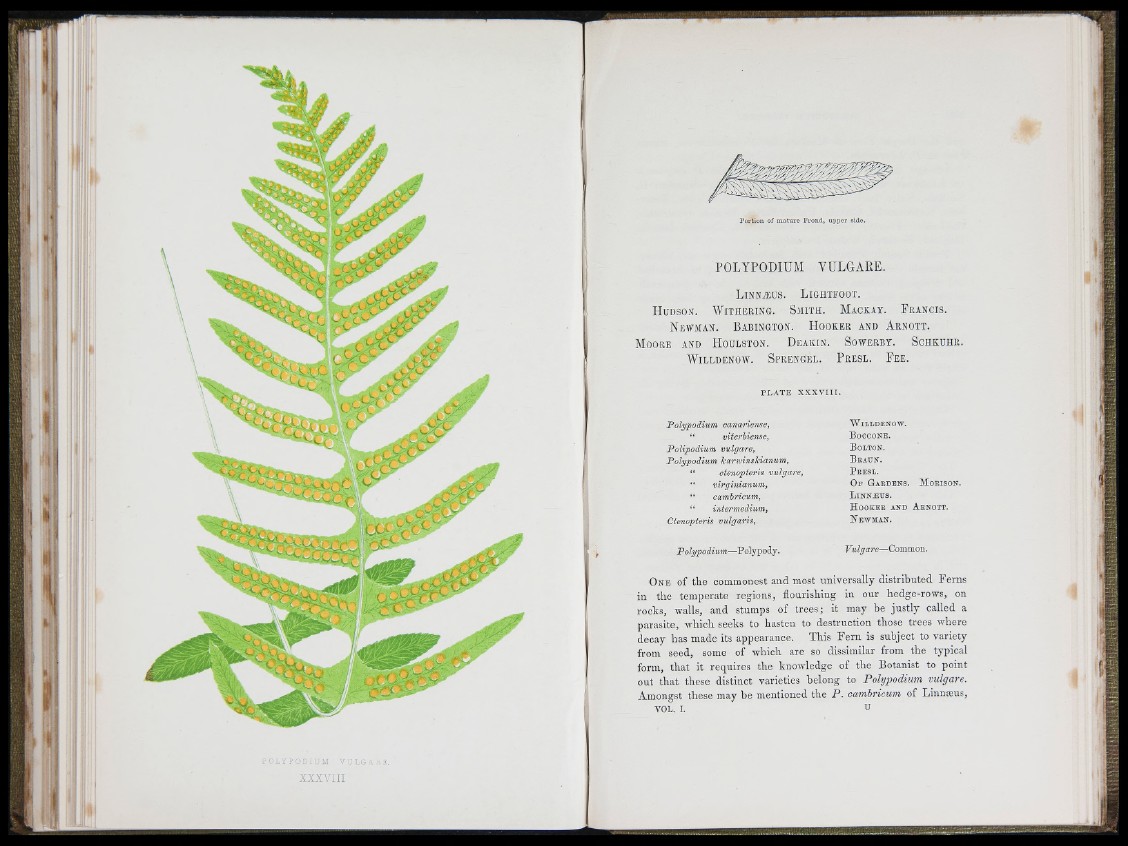
# v
W / <-
41. Y P o f) ; ' = M ■'■ i; i, G A .-. K.
XXXVI I I
Portion of mature Frond, upper side.
POLYPODIUM VULGARE.
L in n æ ü s . L ig h t f o o t .
H u d s o n . W it h e r in g . S m it h . M a c k a y . F r a n c is .
N ew m a n . B a b in g t o n . H o o k e r a n d A r n o t t .
M o o r e a n d H o u l s t o n . D e a k in . S o w e r b y . S c h k u h r .
W il l d e n o w . S p r e n g e l . P r e s l . F e e .
Í.OÍ
P L A T E X X X V I I I .
P o lypodium canariense,
Polipodium vulgare,
Polypodium karioinslcianum,
“ ctenopteris vulgare,
“ camhricum,
“ intermedium,
Ctenopteris vulgaris,
W i l l d e n o w .
B o c c o n e .
B o l t o n .
B e a u n .
P r e s l .
O f G a r d e n s . M o r i s o n .
L i n n æ u s .
H o o k e r a n d A r n o t t .
JSTe w m a n .
Polypodium—Polypody. Vulgare—Comvoon.
O n e of the commonest and most universally distributed Ferns
in th e temperate regions, flourishing in our hedge-rows, on
rocks, walls, and stumps of tre e s; it may be ju s tly called a
parasite, which seeks to hasten to destruction those trees where
decay has made its appearance. This F e rn is subject to variety
from seed, some of which are so dissimilar from the typical
form, th a t it requires the knowledge of the Botanist to point
out th a t these distinct varieties belong to Polypodium vulgare.
Amongst these may be mentioned the P . cambricum of Linnæus,
V O L . I. U